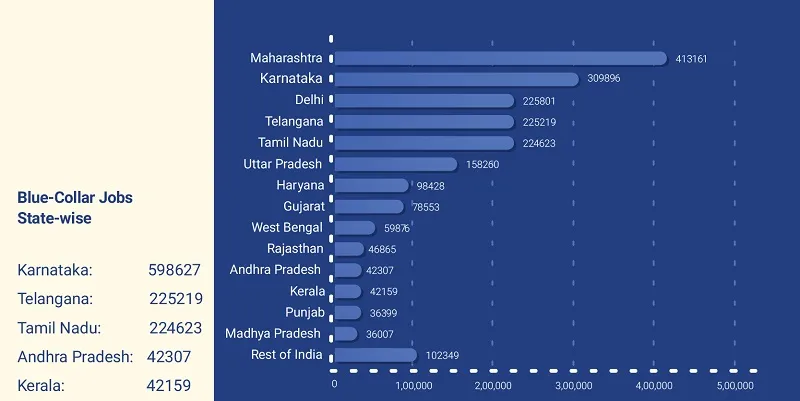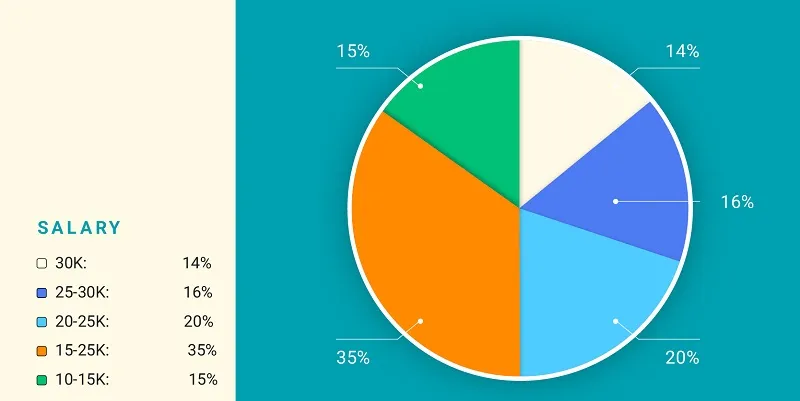On the job: the state of the blue-collar gig economy in India
Bengaluru and Delhi are top destinations for blue-collar workers in India, followed by Mumbai and Pune, according to a report by BetterPlace.
The blue-collar workforce in India is expanding as demand for everyday services has increased in urban areas. From delivering food and appliances, to helping with home maintenance and carpentry work, the segment is growing exponentially, mostly driven by rapid urbanisation. A majority of the blue-collar workforce comes from villages, migrating to cities in search of better jobs.
BetterPlace, a platform for blue-collar workers, in its recent report, estimates that out of more than 21 lakh jobs across select job verticals in 2019-20, the gig economy accounted for over 14 lakh jobs.
The largest jobs are in the following areas (Data Courtesy: BetterPlace):
● Delivery staff: 8,02,745+
● Drivers: 5,98,627+
● Security: 3,49,313+
● Facility: 2,49,657
● Beautician: 24,657
● Maintenance workers: 25,145
● School workers: 49,855

Migratory Population
City-wise data on blue-collar workers
● Bengaluru: 2,34,800
● Delhi: 2,25,801
● Mumbai: 1,33,244
● Pune: 1,10,520
● Chennai: 93,222
● Noida: 85,460
● Hyderabad: 54,052
● Gurugram: 50,690
● Kolkata: 23,950
Reports suggest that in India, Uttar Pradesh and Andhra Pradesh have the largest number of people migrating, closely followed by Assam and Odisha.

State wise jobs
About 35 percent of this workforce earns a salary of Rs 15,000-Rs 25,000 per month. Nearly two-thirds of the workforce falls in the age group of 24-38 years. Says Pravin Agarwal, Co-founder, BetterPlace,
“Indian companies are changing the way they train and help blue collar workers to have a better life.”
Ola, Flipkart, and Zomato are some of the companies which have strong policies for blue-collar workers. These companies were not available for comment.
BetterPlace’s take on the future of jobs
The data clearly indicates growth in the demand for blue-collar jobs, and stresses on the need for a constant pool of skilled resources driven by industry requirements that are constantly evolving.

Salary for blue collar workers
The problem, says BetterPlace, is that there is lack of awareness among job seekers, which needs to be resolved with a frictionless ecosystem. There should be an integrated digital and physical system in place to address the needs of the job seeker and match those with the employer. Only this will lead to support beyond skilling. There is also a need to assess their credit and assets. For example, Zomato and Ola recently awarded their best-blue collared workers with a felicitation and free insurance cover.
Today, blue-collar workers are looking at savings, location, living conditions and a community, which are some of the key factors in determining the willingness for them to take up a job. BetterPlace is working with Flipkart, Zomato and Ola, among several companies, to help companies organise their blue-collar work force.
Commenting on the need to improve the opportunities for India’s blue-collar workforce, Mohandas Pai, Chairman of Aarin Capital and an investor in Better Place, says:
“India has to manage formal and informal jobs, and platforms like BetterPlace will use data to match the demand and supply of informal jobs.”







